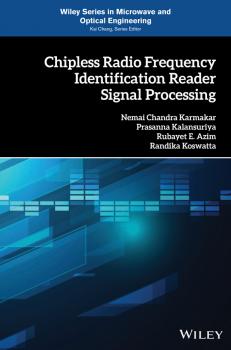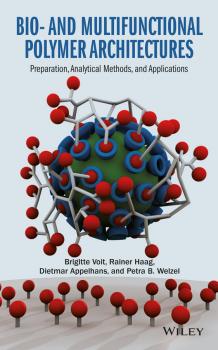Техническая литература
Различные книги в жанре Техническая литератураPolymer Nanocomposites based on Inorganic and Organic Nanomaterials
This book covers all aspects of the different classes of nanomaterials – from synthesis to application. It investigates in detail the use and feasibility of developing nanocomposites with these nanomaterials as reinforcements. The book encompasses synthesis and properties of cellulose nanofibers, bacterial nanocellulose, carbon nanotubes / nanofibers, graphene, nanodiamonds, nanoclays, inorganic nanomaterials and their nanocomposites for high-end applications such as electronic devices, energy storage, structural and packaging. The book also provides insight into various modification techniques for improving the functionality of nanomaterials apart from their compatibility with the base matrix.
Nanoelectronics. Materials, Devices, Applications, 2 Volumes
Offering first-hand insights by top scientists and industry experts at the forefront of R&D into nanoelectronics, this book neatly links the underlying technological principles with present and future applications. A brief introduction is followed by an overview of present and emerging logic devices, memories and power technologies. Specific chapters are dedicated to the enabling factors, such as new materials, characterization techniques, smart manufacturing and advanced circuit design. The second part of the book provides detailed coverage of the current state and showcases real future applications in a wide range of fields: safety, transport, medicine, environment, manufacturing, and social life, including an analysis of emerging trends in the internet of things and cyber-physical systems. A survey of main economic factors and trends concludes the book. Highlighting the importance of nanoelectronics in the core fields of communication and information technology, this is essential reading for materials scientists, electronics and electrical engineers, as well as those working in the semiconductor and sensor industries.
Smart Cities. Foundations, Principles, and Applications
Provides the foundations and principles needed for addressing the various challenges of developing smart cities Smart cities are emerging as a priority for research and development across the world. They open up significant opportunities in several areas, such as economic growth, health, wellness, energy efficiency, and transportation, to promote the sustainable development of cities. This book provides the basics of smart cities, and it examines the possible future trends of this technology. Smart Cities: Foundations, Principles, and Applications provides a systems science perspective in presenting the foundations and principles that span multiple disciplines for the development of smart cities. Divided into three parts—foundations, principles, and applications—Smart Cities addresses the various challenges and opportunities of creating smart cities and all that they have to offer. It also covers smart city theory modeling and simulation, and examines case studies of existing smart cities from all around the world. In addition, the book: Addresses how to develop a smart city and how to present the state of the art and practice of them all over the world Focuses on the foundations and principles needed for advancing the science, engineering, and technology of smart cities—including system design, system verification, real-time control and adaptation, Internet of Things, and test beds Covers applications of smart cities as they relate to smart transportation/connected vehicle (CV) and Intelligent Transportation Systems (ITS) for improved mobility, safety, and environmental protection Smart Cities: Foundations, Principles, and Applications is a welcome reference for the many researchers and professionals working on the development of smart cities and smart city-related industries.
Chipless Radio Frequency Identification Reader Signal Processing
Presents a comprehensive overview and analysis of the recent developments in signal processing for Chipless Radio Frequency Identification Systems This book presents the recent research results on Radio Frequency Identification (RFID) and provides smart signal processing methods for detection, signal integrity, multiple-access and localization, tracking, and collision avoidance in Chipless RFID systems. The book is divided into two sections: The first section discusses techniques for detection and denoising in Chipless RFID systems. These techniques include signal space representation, detection of frequency signatures using UWB impulse radio interrogation, time domain analysis, singularity expansion method for data extraction, and noise reduction and filtering techniques. The second section covers collision and error correction protocols, multi-tag identification through time-frequency analysis, FMCW radar based collision detection and multi-access for Chipless RFID tags as we as localization and tag tracking. Describes the use of UWB impulse radio interrogation to remotely estimate the frequency signature of Chipless RFID tags using the backscatter principle Reviews the collision problem in both chipped and Chipless RFID systems and summarizes the prevailing anti-collision algorithms to address the problem Proposes state-of-the-art multi-access and signal integrity protocols to improve the efficacy of the system in multiple tag reading scenarios Features an industry approach to the integration of various systems of the Chipless RFID reader-integration of physical layers, middleware, and enterprise software Chipless Radio Frequency Identification Reader Signal Processing is primarily written for researchers in the field of RF sensors but can serve as supplementary reading for graduate students and professors in electrical engineering and wireless communications.
Tropical Roots and Tubers. Production, Processing and Technology
Roots and tubers are considered as the most important food crops after cereals and contribute significantly to sustainable development, income generation and food security especially in the tropical regions. The perishable nature of roots and tubers demands appropriate storage conditions at different stages starting from farmers to its final consumers. Because of their highly perishable nature, search for efficient and better methods of preservation/processing have been continuing alongside the developments in different arena. This book covers the processing and technological aspects of root and tuber foods, detailing the production and processing of roots and tubers such as taro, cassava, sweet potato, yam and elephant foot yam. Featuring chapters on anatomy, taxonomy and physiology, molecular and biochemical characterization, GAP, GMP, HACCP, Storage techniques, as well as the latest technological interventions in Taro, Cassava, Sweet potato, yam and Elephant foot Yam.
Process Control Design for Industrial Applications
This book presents the most important methods used for the design of digital controls implemented in industrial applications. The best modelling and identification techniques for dynamical systems are presented as well as the algorithms for the implementation of the modern solutions of process control. The proposed described methods are illustrated by various case studies for the main industrial sectors There exist a number of books related each one to a single type of control, yet usually without comparisons for various industrial sectors. Some other books present modelling and identification methods or signal processing. This book presents the methods to solve all the problems linked to the design of a process control without the need to find additional information.
Bio- and Multifunctional Polymer Architectures. Preparation, Analytical Methods, and Applications
This reference/text addresses concepts and synthetic techniques for the preparation of polymers for state-of-the-art use in biomedicine, synthetic biology, and bionanotechnology.
Ecohydraulics. An Integrated Approach
Ecohydraulics: An Integrated Approachprovides a research level text which highlights recent developments of this emerging and expanding field. With a focus on interdisciplinary research the text examines:– the evolution and scope of ecohydraulics interactions between hydraulics, hydrology, fluvial geomorphology and aquatic ecology the application of habitat modelling in ecohydraulic studies state of the art methodological developments and approaches detailed case studies including fish passage design and the management of environmental flow regimes research needs and the future of ecohydraulics research The contributions offer broad geographic coverage to encapsulate the wide range of approaches, case studies and methods used to conduct ecohydraulics research. The book considers a range of spatial and temporal scales of relevance and aquatic organisms ranging from algae and macrophytes to macroinvertebrates and fish. River management and restoration are also considered in detail, making this volume of direct relevance to those concerned with cutting edge research and its application for water resource management. Aimed at academics and postgraduate researchers in departments of physical geography, earth sciences, environmental science, environmental management, civil engineering, biology, zoology, botany and ecology; Ecohydraulics: An Integrated Approach will be of direct relevance to academics, researchers and professionals working in environmental research organisations, national agencies and consultancies.
Coupled CFD-DEM Modeling. Formulation, Implementation and Application to Multiphase Flows
Discusses the CFD-DEM method of modeling which combines both the Discrete Element Method and Computational Fluid Dynamics to simulate fluid-particle interactions. Deals with both theoretical and practical concepts of CFD-DEM, its numerical implementation accompanied by a hands-on numerical code in FORTRAN Gives examples of industrial applications
Biotechnology of Bioactive Compounds. Sources and Applications
Bioactive compounds play a central role in high-value product development in the chemical industry. Bioactive compounds have been identified from diverse sources and their therapeutic benefits, nutritional value and protective effects in human and animal healthcare have underpinned their application as pharmaceuticals and functional food ingredients. The orderly study of biologically active products and the exploration of potential biological activities of these secondary metabolites, including their clinical applications, standardization, quality control, mode of action and potential biomolecular interactions, has emerged as one of the most exciting developments in modern natural medicine. Biotechnology of Bioactive Compounds describes the current stage of knowledge on the production of bioactive compounds from microbial, algal and vegetable sources. In addition, the molecular approach for screening bioactive compounds is also discussed, as well as examples of applications of these compounds on human health. The first half of the book comprises information on diverse sources of bioactive compounds, ranging from microorganisms and algae to plants and dietary foods. The second half of the book reviews synthetic approaches, as well as selected bioactivities and biotechnological and biomedical potential. The bioactive compounds profiled include compounds such as C-phycocyanins, glycosides, phytosterols and natural steroids. An overview of the usage of bioactive compounds as antioxidants and anti-inflammatory agents, anti-allergic compounds and in stem cell research is also presented, along with an overview of the medicinal applications of plant-derived compounds. Biotechnology of Bioactive Compounds will be an informative text for undergraduate and graduate students of bio-medicinal chemistry who are keen to explore the potential of bioactive natural products. It also provides useful information for scientists working in various research fields where natural products have a primary role.









